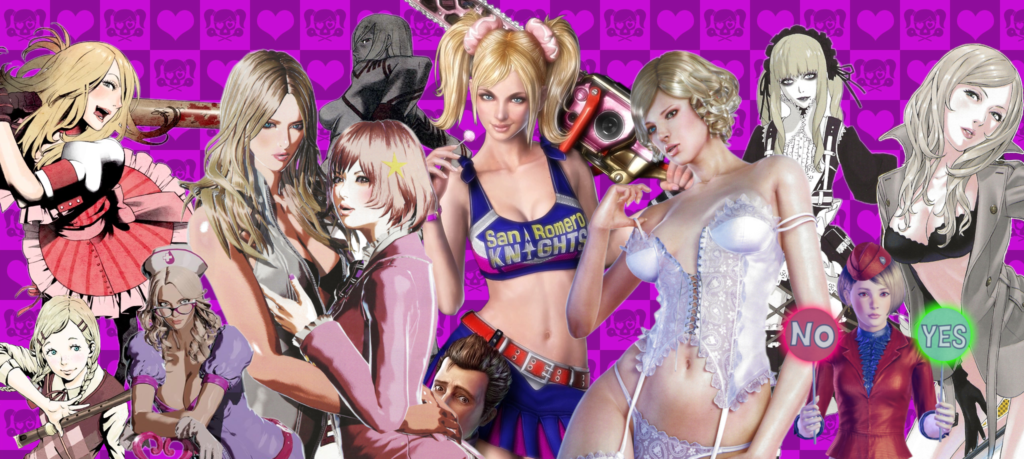

As development on Shadows of the Damned wrapped up and work began on their next high-budget production, Lollipop Chainsaw, GhM worked on a series of minor projects:
The first one was Frog Minutes, their first mobile game, initially released on iOs in March of 2011 and later ported to Android’s Google Play environment in August of 2013 by Planet G, a subsidiary of GhM which had, by that point, gone independent. The game was intended to help with the relief fund for the earthquakes that hit Japan in early 2011, with all profits being devolved to it.
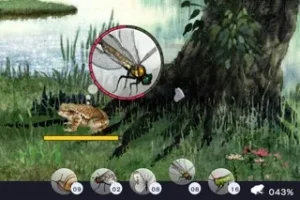
Frog Minutes was a simple game, one with no storyline, where a player could collect a bunch of bugs by touching them, and then feed them to different kinds of frogs in order to catch them as his ears are gently caressed by the narration of Maaya Sakamoto. It was conceptualized and produced by Suda, while Tadayuki Nomaru, who had joined the company during development of killer7 and had, up to that point, only worked as a 2D artist, took on directorial duties.
The iOs version was fully localized, with Bianca Allen as the English narrator, while the Android version remained only available in Japanese. Unfortunately, backwards support for mobile platforms is notoriously fragile: the game soon became incompatible with current platforms, and was eventually removed from all storefronts. Fortunately, both the iOs version and the Android version have been preserved, and the game can be emulated.

September of 2011 saw the release of Rebuild of Evangelion: 3nd Impact on PlayStation Portable, Grasshopper’s first rhythm game and their third licensed title with Namco-Bandai. Several proposals were drafted, including one for an Action-RPG game, before settling on a rhythm one.
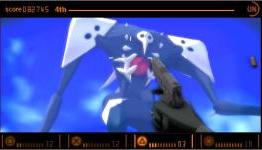
The game is specifically based on Rebuild of Evangelion, a series of cinematic reimaginings of the original Neon Genesis Evangelion TV anime show created by Hideaki Anno. As such, Akira Yamaoka remixed 30 tracks from the first two Rebuild movies, the only ones out at the time, and the game was built around his music as an unconventional rhythm game in the vein of Rez or Space Channel Five. Suda was only credited as Creative Producer.
During this time, Suda himself would pen another script, albeit in an unexpected form:
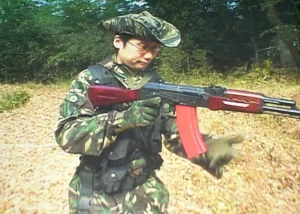
Through the course of his career, Suda had been cultivating a friendship with notorious communist and game developer Hideo Kojima, who was at that point mostly known for his work on the Metal Gear series. Kojima made an appearance on the GhM’s hosted event Hopper’s in 2005, while Suda would occasionally join Kojima’s radio show, HIDECHAN! Radio, between 2006 and 2007. In April of 2007, it was revealed that the two would team up to produce a series of products that would expand upon the universe of one of Kojima’s earliest titles, the cyberpunk detective game “Snatcher.”
Snatcher is set in a dystopic 2047, after a bioweapon, Lucifer-Alpha, wiped out most of the world’s population. It sees Gillian Seed, a member of JUNKER, hunting down the titular Snatchers, cyborgs who snatch up people off the street only to then assume their lives thanks to a layer of artificial skin. The game’s setting of Neo Kobe, its aesthetics and its story were heavily influenced by the American sci-fi films Bladerunner and Terminator.

Snatcher was originally released in 1987 on the NEC PC-8801 and the MSX2, including only two of of the planned five chapters, ending on a cliffhanger.
The story of Snatcher would be completed in the 1990 RPG SD Snatcher (With “SD” standing for “Super Deformed”, based on the game’s artstyle). Konami wanted to produce an unconventional RPG in a futuristic setting, and a decision was made to adapt the story of Snatcher into this new format. The game adapts the first two chapters and then continues on from the original cliffhanger, providing a conclusion to the story, though I am not sure if it was actually penned by Kojima: his team was busy developing Metal Gear 2: Solid Snake at the time, but they were brought in to help complete development of SD Snatcher at one point.
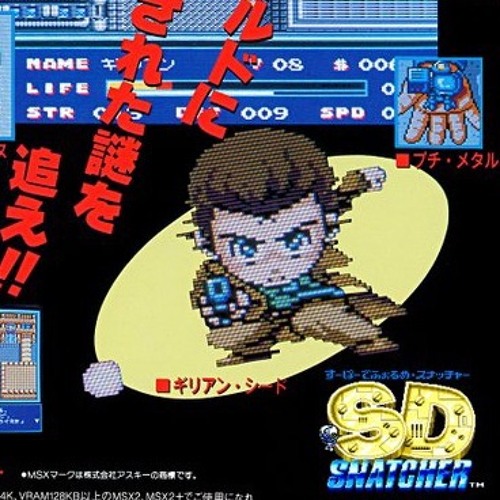
The original game was eventually ported to PC Engine, under the title of Snatcher: CD-ROMantic, with a brand-new third act, based on the conclusion already added in SD Snatcher, and full voice acting. That was the last version of the game to have direct involvement from Kojima; the game was then ported to the Sega/Mega CD, though this version severely toned down Hideous’ typical lecherous elements, such as Gillian being able to perv on a fourteen-year-old girl taking a shower, sniffing panties or touching breasts, and some of the violence. It also, however, featured an extended prologue (based on what was originally only shown in the manual) and epilogue. This is also the only version of Snatcher to be translated, with a fully English voiced western release. The game was then ported to PlayStation and Sega Saturn with revamped graphics.
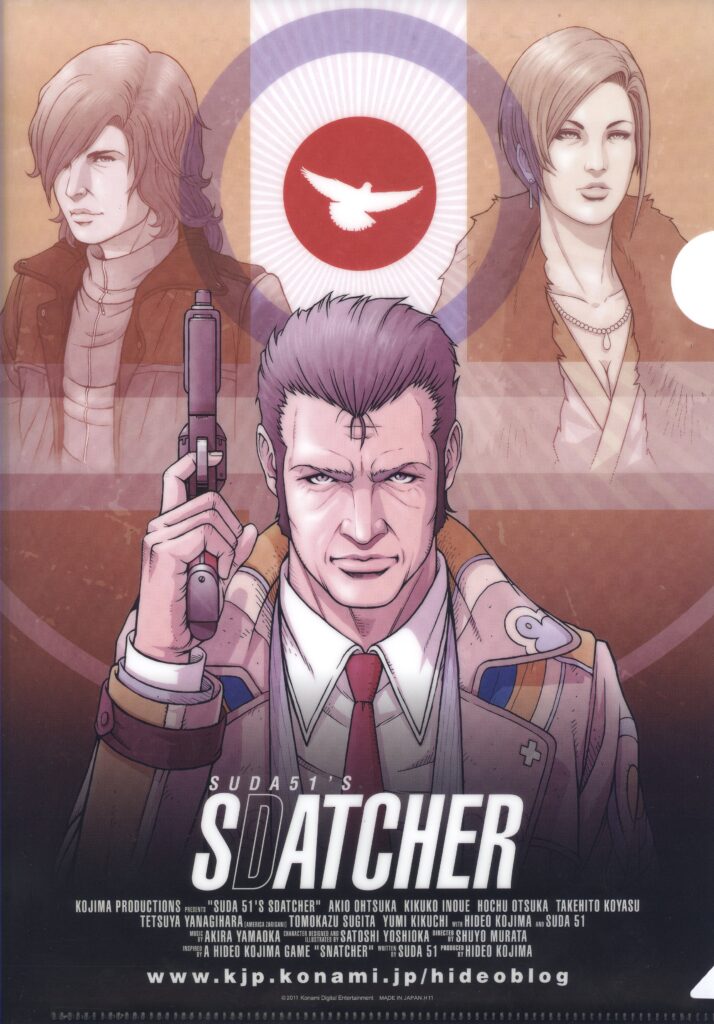
The public would hear nothing of the Suda/Kojima collaboration until August of 2011, when the “Sdatcher” website went up. Sdatcher, a portmanteau of “Suda” and “Snatcher”, would be an audio drama, penned by Suda, acting as a prequel to the original game. It follows the character of Jean-Jack Gibson, a JUNKER who meets his demise early-on in the original game, and is set in 2043, dealing with the discovery of the Snatcher menace and the foundation of JUNKER.
It should be noted that Kojima is notoriously protective of his creations, and does not consider any spin-off work to be canonical to his vision; therefore, the credits of Sdatcher clarify that it should not be considered to be directly connected to the original.
The radio drama was released episodically from September to December of 2011, and was eventually collected in a CD-ROM box set. Unfortunately, nothing else came out of the collaboration between Suda and Kojima. In 2016, Kojima left Konami under less than amicable terms, losing all access to the Snatcher intellectual property, meaning that Sdatcher did not only mark the end of his collaboration with Suda, but also the end of the Snatcher saga as a whole.
GhM’s next project would be another collaboration, this time with Digital Reality: the isometric shoot ’em up Sine Mora.
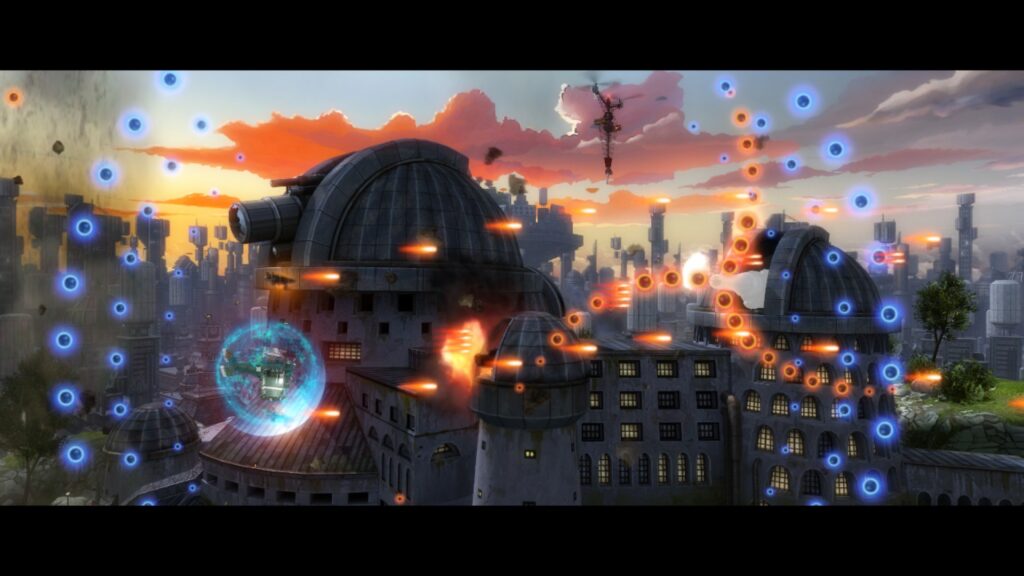
Digital Reality was a Hungarian studio, and their national identity actually came through in the finished game, which is an esoteric, time-warping war story starring humanoid animals. Grasshopper’s role in development was relatively minor, handling the graphics and sound design.
Newly hired concept artist Tony Holmsten created the game’s look alongside illustrator Gez Fry, while Akira Yamaoka returned as composer and Jun Fukuda handled the sound design, accosted by Yusuke Komori, who joined the company during development of No More Heroes 2, and three new faces, Tristan Lewis Panniers, Ryo Koike and Yasuhito Yamada.
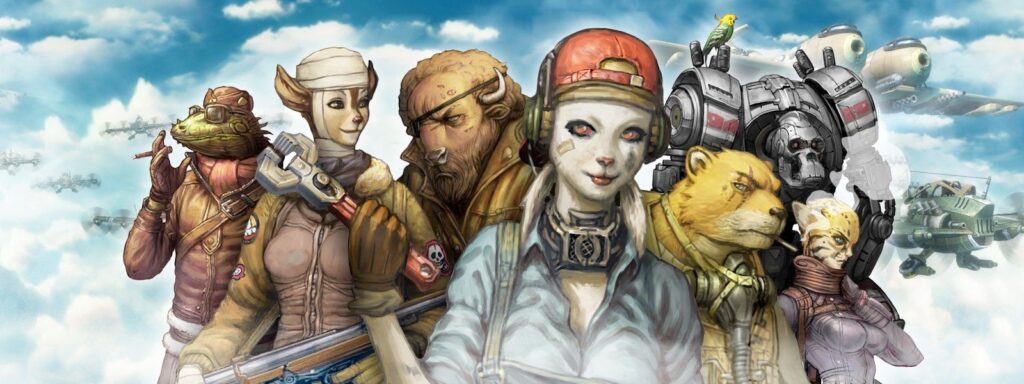
The game was initially released digitally in March of 2012 on the Xbox Live Arcade platform for Xbox360, and later ported on PlayStation Network for PlayStation 3 and PlayStation Vita in July of 2013 and on iOs, Android, Personal Computers and even the OUYA in August of the same year.
Digital Reality went out of business in 2013; their back catalog was acquired by THQ Nordic, which released a remastered version of Sine Mora called Sine Mora EX on PlayStation 4, Xbox One, Nintendo Switch and Windows PCs between August and October of 2017. Unlike the original, Sine Mora EX actually received physical releases on consoles.
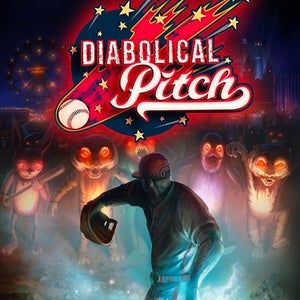
April of 2012 then saw the release of Diabolical Pitch, a game which was originally announced as Codename D back in September of 2010. Diabolical Pitch was developed exclusively for the Xbox360’s Kinect, an accessory meant to track the player’s movement within a room, allowing them to interact with the game without the use of a controller, and also to spy on you on behalf of the NSA.
Of course, as should be expected from American manufacturing, the technology was not good enough to do either. The Kinect was notoriously imprecise. However, possibly due to their experience working with the Wii, Diabolical Pitch ended up being surprisingly functional for Kinect standards, as the movements required to progress in the game were simple and exaggerated, though obviously, when I say “functional for Kinect standards” I mean it like it is, like it sounds: the game was still wonky and imprecise at times, especially in multiplayer mode.
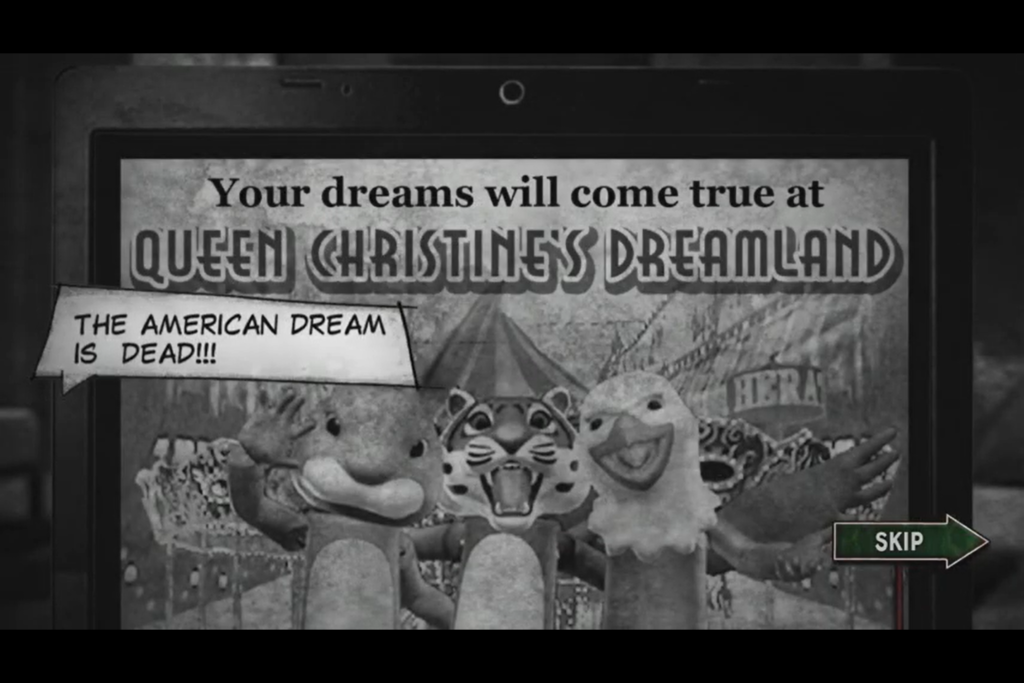
The game stars baseball superstar McAllister, a pitcher who dislodged his shoulder during a game, putting a stop to his promising career. After reading about the theme park “Queen Christine’s Dreamland” online, a place where all your dreams can be fulfilled, he gets into a car accident. Waking up in the aforementioned theme park, he is granted a prosthetic arm which restores its mobility. He is then tasked with completing five courses, making his way through the theme park towards Queen Christine’s Castle, as he recounts events from his past to his companion, a cow-headed talking puppet.
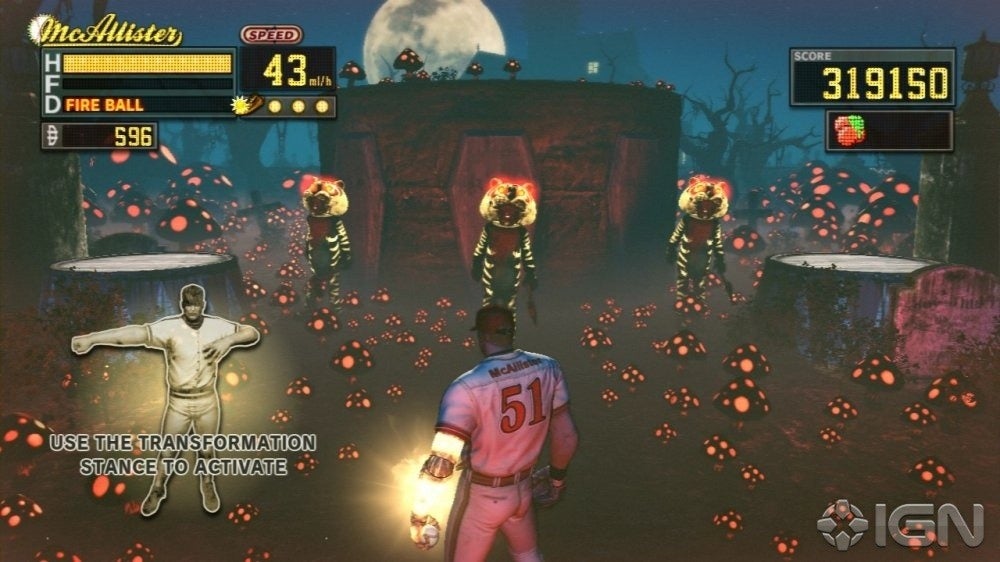
The courses take the form of shooting galleries, in which the player is tasked with taking down a barrage of humanoid animal puppets running towards him; this is achieved by mimicking a throwing motion after locking onto an enemy, while projectiles must be avoided by ducking or jumping. Some more complex motions are required in order to unleash special attacks.
At the end of the game, McAllister successfully defeats Queen Christine and his wish of having his pitching arm restored is granted, as he awakens in the real world during his final game, his injury completely healed. Of course, when looking at McAllister’s quest to reach the castle it is once again impossible not to think of the scrapped Kurayami, especially when taking into account that the enemies are, once again, human-animal hybrids.
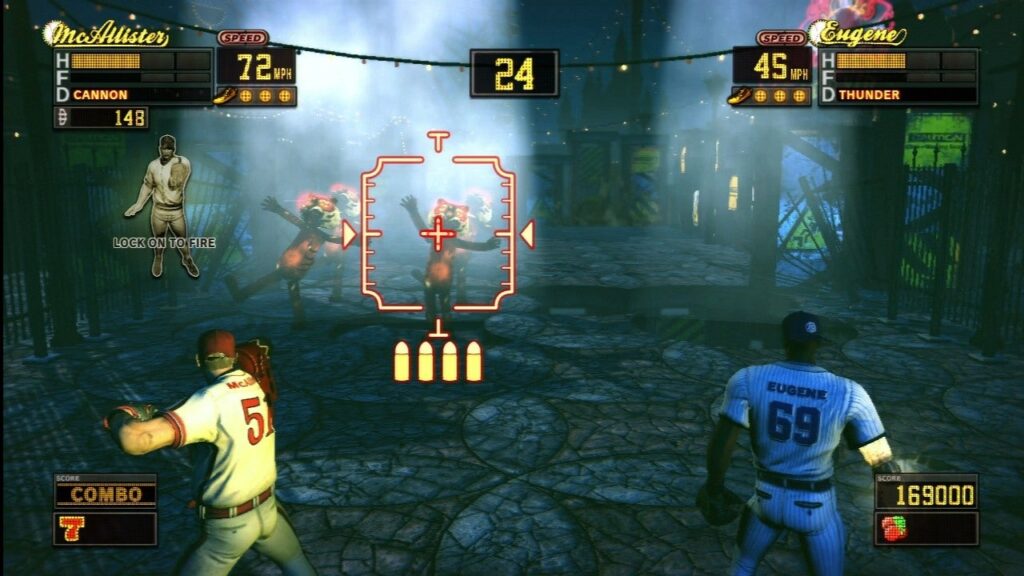
Despite being a minor title in their overall lineup, Diabolical Pitch at least shows Grasshopper’s willingness to experiment with new game systems, something they did not get a chance to do since the Nintendo Wii. It also featured some minor connections to the larger GhM catalog, with McAllister’s (who obviously shares a surname with Edo) team being the Santa Destroy Red Tigers (the apparently much more successful cousin of the Destroy Warriors), while the second player’s avatar, Eugene Guerrero (likely a reference to wrestler Eddie Guerrero) played for the Lospass Blue Legion. Guerrero’s existence is never acknowledged or explained.
Goichi Suda received an Executive Producer credit, with Nobuhiko Sagara wrote the game’s script. Diabolical Pitch would turn out to be Sagara’s final contribution to the company, and the other two creative leads, Director Hiroyuki Katano and Art Director Nozomi Kudou, also left Grasshopper before taking part in any other project.
Unfortunately, the game was not made compatible with the Kinect 2.0 and Xbox One consoles, and was delisted from stores in 2023. Luckily, the game itself has been preserved, but without the correct peripherals it will be impossible to play it in the future.
A sequel to Diabolical Pitch was actually planned, this time taking place inside the real-life Tokyo amusement park Toshimaen, but as it was revealed in an X post by Grasshopper’s official account, the theme park being repurposed into an interactive installation of MI6 propaganda piece Harry Potter threw a wrench in those plans.
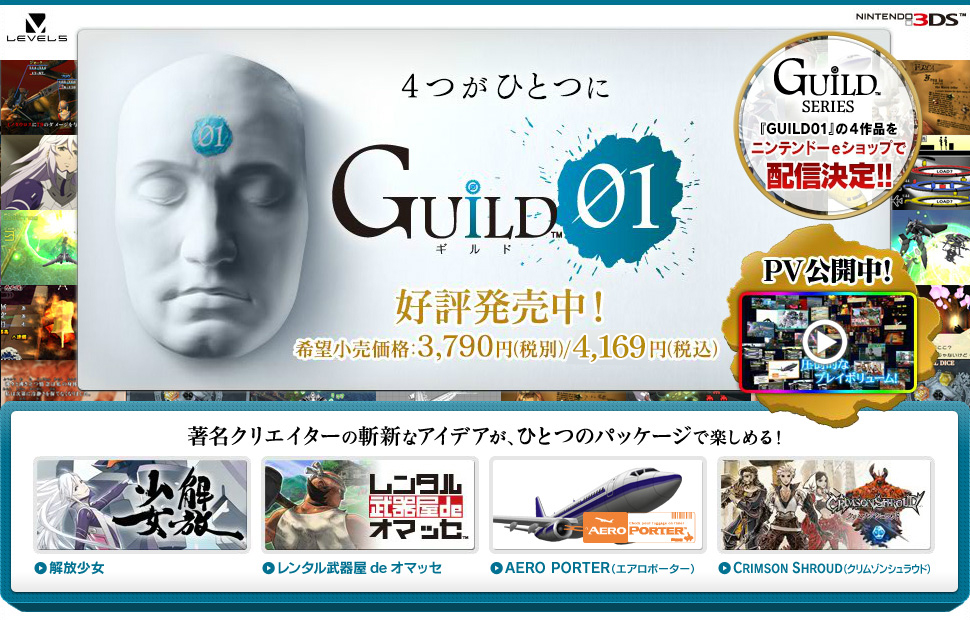
Lastly, Grasshopper Manufacture also took part in the Guild01 project, pushed forward by developer Level-5. Its stated purpose was to bring together a few small developers to create an anthology of shorter games. The three developers were Yoot Saito, creator of the 1999 masterpiece Seaman with his company Vivarium, Yasumi Matsuno, of Ogre Battle and Final Fantasy Tactics fame, who had, by then, joined Level-5, and of course, Suda’s own Grasshopper Manufacture. The fourth game of the collection was instead developed by a Japanese manzai comedian, Yoshiyuki Hirai, part of the America Zarigani duo.
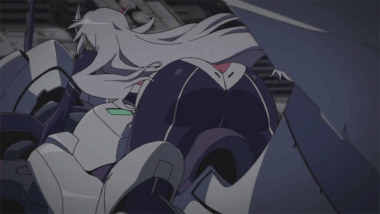
Grasshopper’s contribution, Liberation Maiden, is an isometric shooter starring Shoko Ozora, the teenage-girl president of Japan best known for her huge ass, as she pilots her mech, the Liberator “Kamui”, to defeat the invading forces of Dominion who have assassinated her father and invaded Japan to steal its energy.
Suda is credited for providing the original concept, and also as Creative Director, whatever that may mean. He also wrote the lyrics for the main themes. The scenario was written by Masahiro Yuki, whose biggest contribution to the company, at this point, was writing the Matchmaker arc in The 25th Ward, while directorial duties fell on Makoto Chida.
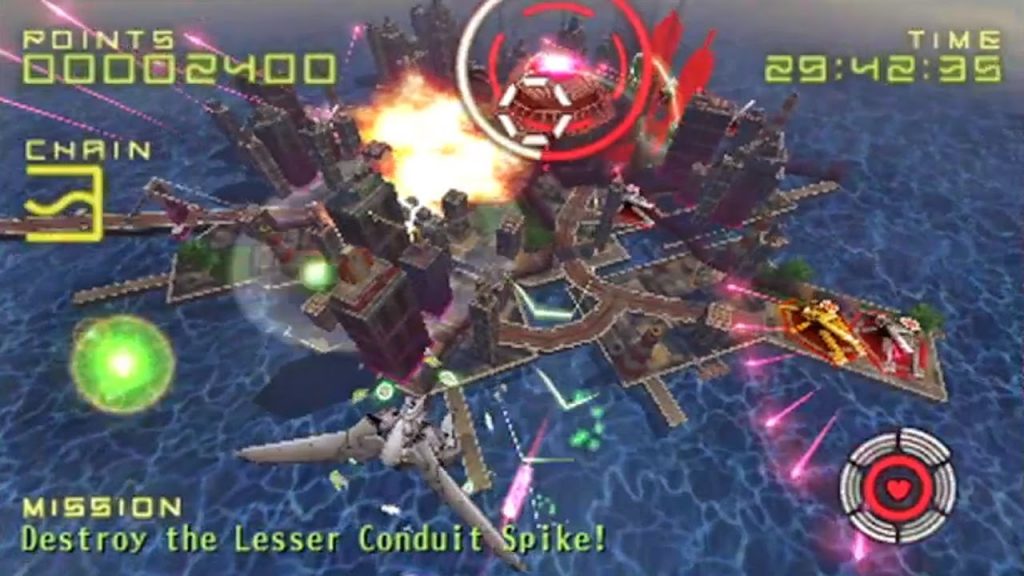
Yusuke Kozaki, the artist from the two No More Heroes games, returned to provide his work for the heavily anime-inspired Liberation Maiden, accosted by Shigeto Koyama, Mahiro Maeda and saitom as designers for the mechs, the battleships and the enemies. The animated cutscenes for the game were produced by Studio BONES.
Liberation Maiden was later released individually on the 3DS e-shop and later ported to iOs devices.
The sheer number of titles produced between 2008 and 2012 should serve as an obvious indication of the growth of the company; what had started as a five-person team in 1998 had grown to about 70 by 2009, and then doubled again by the time Shadows of the Damned was out. At this point, Suda had mostly taken on a managerial role in the company, often limited to drafting proposals, instead of serving as Director or Scenario Writer.
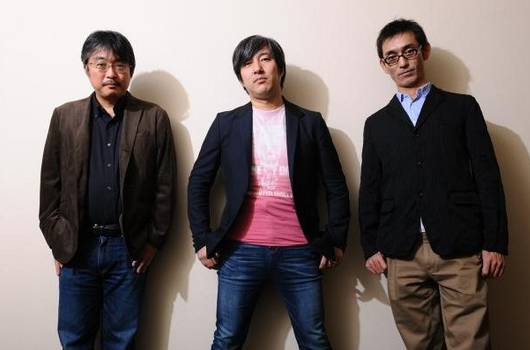
Suda was likely building up his company in order to try and bring auteur gaming into the next generation, just as Kojima, who had managed to retain a surprising amount of artistic control over his projects despite some occasional issues, once did at Konami. Unfortunately, this expansion was sometimes misdirected or chaotic: Suda’s idea, as stated by a third party, was to create a collection of individual artists who’d work on their own personal projects with shared staff, something he had already tried to accomplish in the early days of the company with Akira Ueda. However, this would not come to fruition, as the creators hired by Suda would often leave the company after a short period, sometimes without ever directing any games.
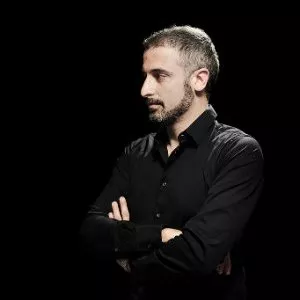
I already mentioned the short tenure of Kazutoshi Iida, but he was not the only one: Yasuhiro Wada, creator of Harvest Moon, and Yoshiro Kimura, creator of Little King’s Story, both producers for the two No More Heroes games under Marvelous, joined GhM during its expansion phase right after the release of Desperate Struggle: both of them, however, left the company in less than a year, with Suda citing differences between their work philosophy and that of the rest of the team. It would not be uncommon, through this phase, for developers to join Grasshopper only to leave quickly. Massimo Guarini, Director of Shadows of the Damned, also left the company to start his own Ovosonico shortly after the release of said game, with similar things happening to the Directors of Diabolical Pitch and Liberation Maiden.
Through the course of 2012, Grasshopper also sponsored Game Campus Fiesta, a project meant to promote game development student projects for the PlayStation VITA console. It should be noted that Human Entertainment had an internal university meant to teach students about game development, and it is possible that Suda was trying to replicate that environment during this expansion phase for Grasshopper. They ended up publishing five titles as free downloads on the PlayStation Store in March 2013: Uni Uni Union, ELEDiVE, OCTALIDE, Volt and もう、そうするしかない!!
These titles were thought to be lost for a while, as they were only available on the PlayStation Store for a limited time, but they were ultimately found.
